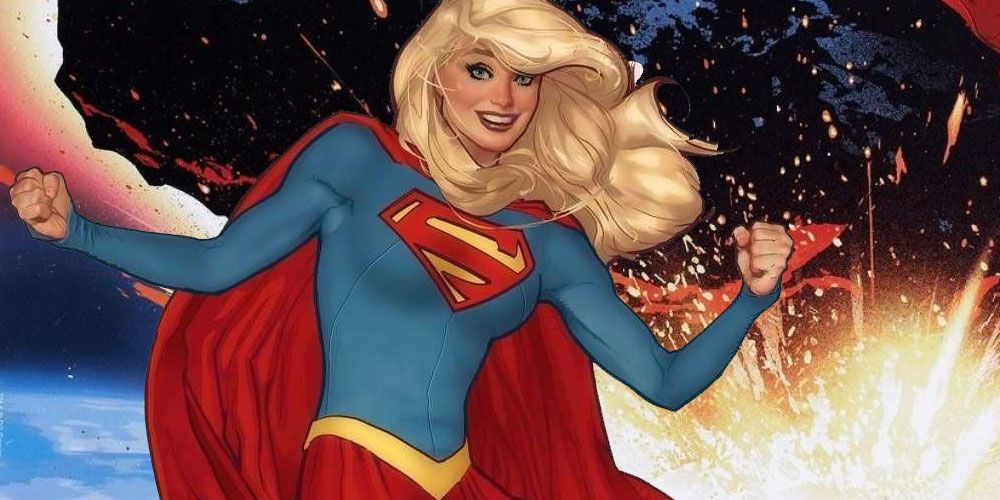Grant Morrison recently discussed the bizarre renditions of Supergirl over the years and reminds us that perhaps the greatest portrayal of her came in a simple, short story in 2002. Rather than portraying a girl struggling to maintain her moral and ethical center, Morrison reminds us that Supergirl could just be a normal teenage girl facing normal problems, who just happens to have superpowers.
Grant Morrison’s recent posts on their Substack newsletter Xanaduum have focused on the path towards their Superman and the Authority mini-series. Much of that backstory includes Dan Didio’s 5G initiatives. While Morrison liked much of the plan, he bristled at the suggested changes to Supergirl. In the 5G plans, Supergirl would become much more fascist, disgruntled, and angry. In Morrison’s words: “Concurrent plans existed to push Supergirl in an increasingly fascistic direction for reasons that made scant sense to me.” DC has struggled over the years to handle Supergirl properly and Morrison’s concerns allude to some truly different takes on the character, including Power Girl, Cir-El, Supergirl/Matrix, and the Earth Angel.
In their latest Substack post, Morrison noted: "When I brought the Maid of Might into the Final Crisis series, my take was very much inspired by the Dylan Horrocks/Jessica Abel story from 2002’s Bizarro Comics anthology book – in my opinion quite simply the greatest Supergirl comic ever. If any version of Supergirl should serve as a template for the character moving forward, this is the one…" That one story is a brief one in the midst of a longer, comedic style book focused around the Bizarro concept. Bizarro Comics won the 2002 Harvey and Eisner Awards for Best Anthology. Its cover featured Matt Groening’s artwork of Bizarro blowing square bubbles trapping the Justice League.
However, Horrocks’ and Abel’s Supergirl story, titled “The Clubhouse of Solitude” is a pause in some wild tales. For a few pages, Supergirl sits and eats in a small diner with Mary Marvel, discussing their lives. The two joke about dating, odd moments of superheroics, the tension between their private and public lives, and the oddities of walking through the human world endowed with superpowers.
Supergirl hasn’t aged, still looking like her teenage self, while Mary hasn’t uttered the word Shazam in years and has aged normally into middle-age. She hints at some terrible tragedy that befell Billy Batson but does not elaborate. At one point, they even discuss the odd romance that Supergirl had with her horse Comet.
Beyond that, nothing of great ramifications occurs, which is the point. Supergirl is framed as a normal person with normal interests and normal conversations, who just happens to be superpowered. For Morrison, it is this aspect of her nature that is intriguing. In recent years as more attempts are made to show the real-world lives of superheroes, this portrayal is remarkably refreshing. Simultaneously, it does demonstrate the real-world lives of superheroes. Not everybody super-powered is going to be morally compromised, devious, ultra-violent, addicted. Real-world portrayals of superheroes must reflect the fact that many people find great joy in the simple aspects of connection and friendship—something many recent takes on heroes have missed entirely. Morrison is right to return our attention to a brief but poignant work.
Morrison would go on to ask, “Why, I say, oh why, is it so hard to simply serve the concept and write the adventures of a smart, creative and kind-hearted teenage girl with superpowers? What purpose earthly or unearthly is served by making this character an embittered space tyrant?” Interestingly, this question is at the core of Tom King’s recent Supergirl: Woman of Tomorrow. Whether Morrison and King were responding to the same internal discussions at DC is unknown, but King answered the question by providing the tyrannical temptation to Supergirl and revealing that her very nature rejects that. With all the gravity of true tragedy pulling her to be embittered, King demonstrates that at her core, Supergirl is not bitter. She is hurt. She struggles. But she is as Morrison describes her: smart, creative, and kind-hearted.



